This is a Nikon SP, a 35mm rangefinder camera made by Nippon Kogaku of Tokyo, Japan between the years of 1957 and 1962. It was the 5th model in Nippon Kogaku’s line of S-series rangefinders, and was the most advanced in the entire series. It was designed to compete directly with the Leica M3 which at the time was the most advanced 35mm rangefinder camera in the world. Like previous Nikon rangefinders, the SP had a few advantages over it’s German competition including a removable back, titanium shutter curtains, and a unique dial viewfinder system that had visible frame lines for six different focal lengths. It was a very expensive and desirable camera when it was first released, and remains so to this very day.
Film Type: 135 (35mm)
Lens: 5cm f/1.4 Nippon Kogaku Nikkor-SC coated 7-elements + others
Lens Mount: Nikon S-mount Bayonet
Focus: 3 feet to Infinity
Viewfinder 1: Coincident Image Coupled Rangefinder w/ Adjustable Frame lines for 5cm, 8.5cm, 10.5cm, and 13.5cm
Viewfinder 2: Scale Focus Galilean Viewfinder w/ Frame lines for 2.8cm and 3.5cm
Shutter: Titanium Curtain Focal Plane (earlier models had a Cloth Focal Plane)
Speeds: T, B, 1 – 1/1000 seconds
Exposure Meter: None
Battery: None
Flash Mount: Coldshoe and M and X Flash Sync
Weight: 720 grams (w/ lens), 578 grams (body only)
Manual: https://bmwdean.com/nikon-sp-manual.htm
How these ratings work |
The Nikon SP is a camera that needs no introduction. It was Nippon Kogaku’s response to the Leica M3 and for many, represented a high point of the Japanese camera industry. It remains a popular camera today both for collectors and users due to it’s extremely high build quality, ease of use, and reliability. They fetch high prices in today’s market and for good reason. If you have an opportunity to buy, or even borrow one of these, I strongly recommend it. | ||||||
| Images | Handling | Features | Viewfinder | Feel & Beauty | History | Age | |
| 2 | 2 | 2 | 2 | 2 | 2 | 30% | |
| Bonus | none | ||||||
| Final Score | 15.6 | ||||||
History
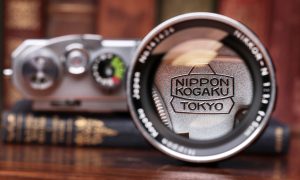
The year was 1954, Nippon Kogaku’s presence in the photographic world was already well known. Their Nikon rangefinders took the best features of the world’s two best German rangefinders, the Leica III and the Zeiss-Ikon Contax and turned them into a single camera. Their Nikkor lenses were being used by professional photographers at LIFE magazine and all over the world. People were taking notice not only to Nippon Kogaku, but the entire Japanese camera industry as a whole.
At this time, Nippon Kogaku was well on it’s way toward releasing it’s next model, the Nikon S2. It would be a huge improvement over the original Nikon S with a much larger viewfinder, improved rangefinder, upgraded shutter with top 1/1000 speed, and a revised body that was both stronger and lighter. Nippon Kogaku was certain the S2 would take the world by storm as the professional photographer’s choice for 35mm rangefinders…
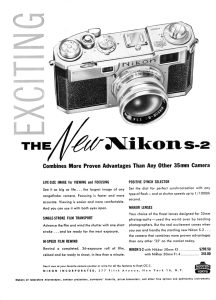
…except Ernst Leitz Wetzlar had something else planned. April 1954 came, and the Leica M3 made it’s debut. Prior to it’s release, all previous Leica cameras were based off a design that had only incrementally changed since Oskar Barnack’s original prototype from 1913. The earliest Leicas were high quality for sure, but had a tiny viewfinder, a screw mount lens, and a primitive body. The Leica M3 was something different, and no one (at least outside of Germany) saw it coming.
The Leica M3 was all new and shared nothing with previous Leicas. It had a unique new body, with a new bayonet lens mount, an advanced rangefinder with a 1:1 viewfinder that allowed photographers to compose and focus with both eyes open, lever wind film advance, a glass pressure plate, and many other improvements. Although still a bottom loader, it had a new door on the back that not only allowed for easier film loading, but also allowed for inspection of the shutter curtains and to check shutter timings should the need arise. The Leica M3 would raise the bar so high for what a professional 35mm camera should be, that there are those today that would say there has never been anything to top it.
The Leica M3 was so impressive, that it immediately stole whatever amount of excitement Nippon Kogaku had planned for the S2 before it was even offered for sale. Shortly before it’s release, Nippon Kogaku would send the S2 back to the drawing board where it would be upgraded with both lever advance and rewind (something the Leica M3 didn’t have). The S2 would make its debut later in 1955, and although it delivered on it’s promise to be a big upgrade from the earlier Nikon S, it was woefully behind the times when compared to the Leica.
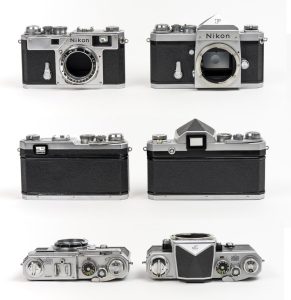
Never one to shy away from a challenge, Nippon Kogaku got to work on what would come next. Interestingly, Nippon Kogaku was already aware that the writing was on the wall for professional rangefinder cameras. The age of the Single Lens Reflex was well on it’s way to supremacy as other Japanese manufacturers like Asahi (Pentax) and Orion (Miranda) had already released a 35mm SLR and the upper management at Nippon Kogaku knew that the time would come for them to release their own SLR. As a result, development of the as of yet unnamed successor to the Nikon S2 coincided with an upcoming Nikon Reflex camera. In an effort to minimize development costs, the new Nikon SLR and rangefinder needed to be built on the same platform and share as many parts as possible.
For the next 2 years, engineers, designers, factory workers, technicians, and pretty much everyone who had anything to do with camera design worked tirelessly into what would be not only Nippon Kogaku’s answer, but Japan’s answer to the Leica M3, while also trying to enter an all new market segment.
Improved from the S2, the new camera would have dual viewfinders that would offer frame lines for six different focal lengths. In the main viewfinder were four parallax corrected adjustable lines for 5cm through 13.5cm lenses. In a separate scale focus viewfinder, you would get fixed frame lines for both 2.8cm and 3.5cm. The M3 only had three focal lengths from 50mm through 135mm, and nothing for wide angle lenses. The shutter was upgraded with ball bearings and titanium curtains (this was actually a mid-model change). The speed selector was changed to a single dial as opposed to the two piece design on earlier cameras. The camera had an all new flash synchronization system that was incredibly accurate and a hot shoe that worked with Nikon specific flashes. The exposure counter reset itself manually, and of course, the Nikon came with a huge array of high quality Nikkor lenses and accessories that equaled and in many cases exceeded those offered by the Germans.
Although making it’s debut two and a half years after that of the M3, the world took notice. While it was no secret that the Japanese were adept makers of lenses and cameras, the Nikon SP proved to be the final nail in the coffin of any doubt that they could keep up with the Germans.
Below is a gallery of a variety of advertisements for the Nikon SP showing how it was marketed at the time. Click on each image and then there is a link to a full size version where you can read the text if you wish.
When it first went on sale, the camera sold with the Nikkor 50/2 lens for $369.50 and with the Nikkor 50/1.4 for $415, which when adjusted for inflation, is comparable to $3245 and $3645 today. The prices came down somewhat by 1959 as advertisements list the prices at $329.50 and $375 for the two different kits. Even at the lower price, the camera was not cheap, comparing in price to cameras today like the Nikon D850 or Sony a7R II digital cameras.
Reception to the Nikon SP was overwhelmingly positive. While Leitz cameras often had competitors in the market, until then there was no single company making an effort to match their best model, feature for feature, and in some cases bettering them, like Nippon Kogaku was doing. Combined with their already glowing reputation as a quality optics maker, the world at large certainly took notice.
Below, I have included a scan of a 9 page article that appeared in the November 1957 issue of Modern Photography where editors Maynard Frank Wolfe and Herbert Keppler spend considerable time going over the camera’s many features, lenses, and accessories. This article was originally slated to be a future Keppler’s Vault article, but it’s relevance to this review caused me to include it here. As always click on each image to see a full size version with easily readable text.
The Nikon SP remained in production until 1962, after which a total of 22,348 were built. The Leica M3 would stay in production longer and sell far more copies than the SP, but that doesn’t necessarily mean it was the more successful camera. For one, at this time, Leitz only made rangefinders. They wouldn’t venture into the world of SLRs until the 1970s, whereas Nippon Kogaku jumped in feet first in 1959 with the release of their Nikon F. They saw the writing on the wall for professional rangefinders, and by 1964 was no longer producing any of them. But also consider, the Nikon SP, more so than any other camera Nikon built was their crowning achievement, and declaration to the world, that they had arrived and was here to stay.
Although the SP would remain Nikon’s most advanced rangefinder, two additional models, called the S3 and S4 came after it. The S3 was released first and was the same as an SP but with a simpler viewfinder. The S4 was a stripped down camera that was built on the same body castings as the SP and S3, but without a self timer, manual resetting frame counter, simpler viewfinder, and cloth curtains. The S4 is one of the rarer S-series rangefinders as they were never officially exported out of Japan.
Today, the Nikon SP remains Nikon’s most sought after rangefinder, and one of the most collectible cameras of any camera made by any company ever. It’s original competition with the Leica M3 has never faded and even today, nearly 62 years after it’s release, people still compare the two. Prices for good working Nikon SPs are quite high, regularly selling for well over $1500 with lenses and in excellent condition.
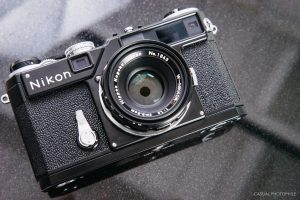
Limited Edition Nikon SP 2005 Edition
On January 24th, 2005, Nikon made an announcement that for a limited time, they would bring back a modern recreation of the classic Nikon SP rangefinder. The camera would be built as closely as possible to the original Nikon SP, but with a few modern changes. This was the second time Nikon had re-released a classic rangefinder, the first time being the Nikon S3 2000 edition. Like that special edition, the 2005 SP would be an exclusive camera available direct from the factory.
In total, 2500 were built, and all were sold through a lottery system almost as quickly as the company started accepting orders for them. The camera would only be available in black, and would come with a W-Nikkor C 3.5cm f/1.8 lens but was fully compatible with all original Nikon rangefinder lenses. Nikon made every effort to keep the new SP as close as possible to the original. A few notable changes was the newer Nikkor lens was multi-coated, compared to the original single coating, the new camera has a film scale using ISO as opposed to ASA like on the original, the new one says “Made in Japan” on the bottom, as opposed to Japan, and of course, the serial numbers of both the lens and bodies are different from the originals.
The “official” price of the 2005 SP was 690,000 Yen, but I doubt any actually sold for that price. Demand from collectors was fierce from the moment the camera was announced, and buyers likely had to pay huge premiums to get one. Recently sold prices on eBay for these cameras is in the $4000 and up price range.
The Nikon SP 2005 Edition is the rare example of a classic camera being re-produced faithfully, in full working condition, by it’s original company. Although this review is about the original model, if you’d like to know more about this special edition, check out the excellent review over at Casual Photophile.
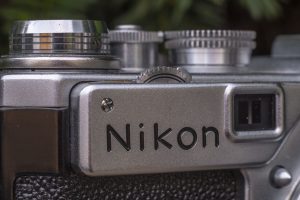
My Thoughts
My friendship with Nikon historian Robert Rotoloni has permitted me use of some wonderful cameras from Robert’s collection. The first was his Nikon M which I reviewed earlier in 2018, but after returning that cherished camera, I asked for an SP. I’ll likely never afford an SP of my own, so having access to multiples in Robert’s collection meant I could choose one that was in the best shape. In this case, it turned out to be camera # 6214833 which suggests it was made probably in 1959 – 1960 since it falls in the middle of the known serial number range of 6200001 to 6224xxx.
This camera was nearly perfect, in every way. Both viewfinders were crystal clear, the rangefinder patch was bright and contrasty, the focus helix moved smoothly and without squeaking, the shutter worked correctly at all speeds, the body and all of the cosmetics were in excellent shape. It was as if this camera was never used, while also not suffering the perils of time like so many old cameras do.
This having been the fourth Nikon rangefinder I’ve handled, it was the one in the best shape. Although it has quite a few more features than the earlier Nikon M and Nikon S2’s I’ve reviewed, using it is very similar, so I don’t know that there’s a whole lot more I can say about it’s handling or use than I already have with those two cameras. If you’d like to know more, I suggest checking out my thoughts on them.

For this review, I thought the best approach would be to compare the Nikon SP to the Leica M3, which was the model that the SP was built to compete against. Before I continue, I feel as though I should clarify that I have no intention of ranking either camera or declaring one a winner over another. If you are in a position to purchase either a Nikon SP or a Leica M3, I’ll just say that the only winner in that decision is you, because no matter which one you go with, you end up with one of the best cameras ever made, in any format, in any size, by any company, ever.
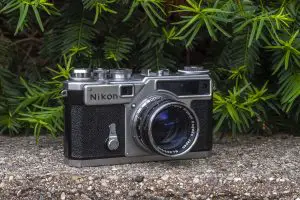
Starting with the looks and build quality, both cameras are gorgeous examples of mid 20th century Japanese and German design. There are likely those who might prefer the cosmetics of one over the other, but there should be no question that the build quality of both cameras is incredibly high. There’s no plastic anywhere on either of these cameras, just metal and glass. Both cameras have substantial weight, don’t creak in your hands like modern plastic cameras do, and both were designed to be professional instruments, so they handle the rigors of every day use well.
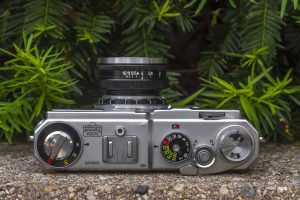
The top plate on both cameras is stepped and features many of the same controls, albeit executed differently. The Nikon has a fold out rewind crank, compared to a simple knob of the M3, but also has a manual dial for setting the frame lines in the viewfinder from 5cm, 8.5cm, 10.5cm, and 13.5cm. The Leica doesn’t have such a knob as this is done automatically via the lens coupling which gives it a slight edge in terms of simplicity. Both cameras have a flash shoe with proprietary flash contacts, a single speed shutter dial, threaded shutter release, rapid wind lever, and automatic resetting exposure counter. Nikon adds a 20 or 36 exposure reminder, and locates the Advance/Rewind selector on the top plate. From a purely aesthetic standpoint, the Leica’s top place is more monochromatic and less cluttered.
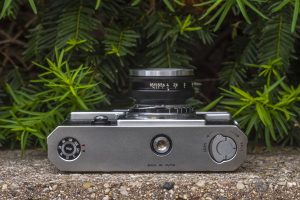
There’s not a whole lot to see on the bottom plates of either camera. The Nikon features a film speed reminder dial on the left, and the film back lock on the right. One small benefit to the Nikon is that the tripod socket is integrated into the main body of the camera, whereas the Leica’s is built into the bottom plate. Having a tripod screwed directly into the body is much stronger than the thin metal of the bottom plate. If the camera takes a bump while mounted to a tripod, bottom plates can bend or become distorted, whereas the main part of the body should remain rigid.
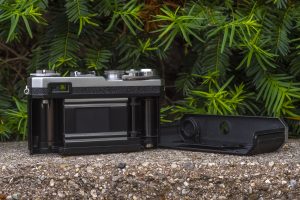
Speaking of the bottom plate of each camera, the Leica M3, like all Barnack and M-series Leicas, is a bottom loader. This attribute is likely to be the most controversial between Nikon and Leica fans. With the M3, Leitz added a swing up door, which greatly improved the film loading experience compared to earlier Leicas, but there are those who simply will never get used to loading a camera through the bottom. Most Leica shooters say that once you get used to it, its just as fast and easy as other methods, but for me, having experience with both, I still prefer the removable back of the Nikon.
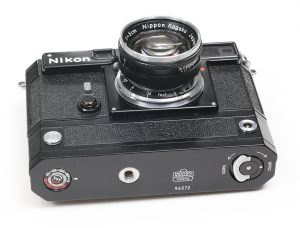
Nikon’s decision to go with a Zeiss-style removable back gave them an additional edge that likely only benefited professional photographers, which is the ability for an attached electric motor wind, something that Leitz did not offer until the M4-2 in 1977. The Nikon S36 Electric Motor was an optional accessory that took the place of the camera back and allowed photographers up to 3 fps shooting for sports or other fast action photography. Incredibly, the SP wasn’t the first Nikon rangefinder with an optional motor drive as the original S2 had an available drive for it as well, although it is incredibly rare today.
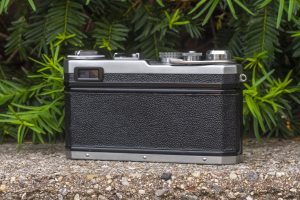
The back of the camera doesn’t offer as much to see with the only feature being the eyepieces for the dual viewfinder windows.

Nikon’s lens mount is essentially a rotated Contax mount, and while it is well built, the larger opening of the bayonet on the Leica’s M-mount is a bit easier and faster to attach and re-attach. I find that on occasion with Nikon rangefinders, getting lenses off is easy, but I tend to fumble around with getting them back on. The Nikon’s mount also has internal and external bayonets. All Nikkor 50mm lenses (except the f/1.1 Nikkor-N) use the internal bayonet. Every other Nikkor lens uses the external bayonet, which covers up the focus scale around the perimeter of the mount. This is neither good nor bad, just different.
If the debate between bottom or back loader doesn’t get you worked up, the second most controversial difference between the Leica M3 and the Nikon SP is probably the viewfinder. When it was first released, one of the headline features of the Nikon SP was it’s inclusion of having two viewfinders with 6 different focal lengths. Four lengths were visible in the main “rangefinder equipped” window, and two more in a scale focus only viewfinder. The Leica M3 featured “only 3” focal lengths, starting with 50mm, all the way to 135mm. According to the Leica M3’s user manual, the omission of anything wider than 50mm was done to maintain a large 1:1 viewing experience at 50mm and to avoid making the 135mm view too small. This is one change with the Leica M2, which adds support for 35mm lenses, but omits the 135mm lines.
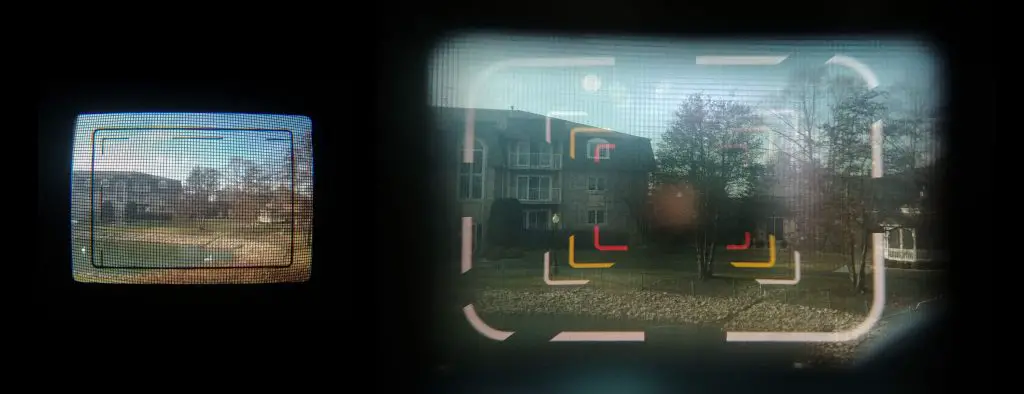
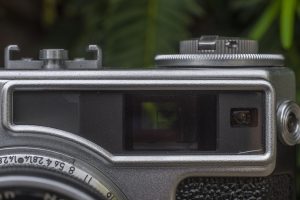
Where the Leica M3 wins out is that the adjustable frame lines are automatic. With the 50mm lens attached, the 50mm lines are visible, swap it for the 90 or 135mm and they change automatically. With the Nikon, you must manually turn a dial on the top of the camera. In addition, the Leica’s viewfinder is noticeably brighter. In fact, I would go as far as to say the view through the M3’s finder is the brightest, and easiest to use of any rangefinder camera I’ve ever used. While the SP’s is still very good, and far from what I would describe as dark, I wholeheartedly prefer the M3’s finder. Making matters worse, is that the complexity of the SP’s system has a side effect of not aging well. While any camera’s finder can become cloudy or dirty, Nikon SPs seem to be negatively affected worse than others, even other Nikon S-series cameras. Thankfully, the example I had for this review was bright and clear, but according to Robert Rotoloni who has handled dozens of SPs over the years, he told me that the number of SPs with cloudy viewfinders greatly outnumber the ones with clear ones.
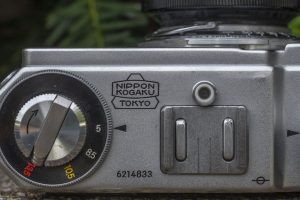
As I stated earlier, both cameras are great, and using the Nikon SP is a joy. It makes no sense to declare either the Nikon SP or Leica M3 superior to the other. This was a top tier camera created for top tier photographers and had a top tier price to go with it. No camera is immune to the ravages of time, but from my limited experience, other than the viewfinder, it seems that the Nikon SP has fared well over the decades and has an unusually high chance of working.
The good thing about professional cameras is that the photographers who used them had them regularly serviced, so there is a chance that original lubricants have been replaced, tolerances have been tightened, and the random bits of grit and crud have all been cleaned out at some point in the past, which can sometimes improve the chances that it would still work well today. Of course, as with anything, buyer beware. If you are willing to shell out the three and four figure asking prices for a Nikon SP, no matter how great of a camera it could be, you’ll want to do your research and ask the right questions before buying one.
My Results
With a limited amount of time to shoot the Nikon SP, I loaded it up with a fresh roll of Fuji 200 and took it with me to a late summer White Sox game to see how the camera would perform in a variety of lighting conditions. The camera was in excellent condition and assuming the shutter speeds were spot on, I did everything in bright light with Sunny 16, and in the night shots, wide open at speeds of 1/30 and 1/60.
In what likely is the least surprising conclusion of any review I’ve ever written, the Nikon SP’s images came out great. There is a reason for Nippon Kogaku’s rapid rise to fame in the 1950s, and while their cameras were well built, their early success was from the performance of their lenses. The Nikkor-SC 5cm f/1.4 lens is superb. Although I don’t show it in these images, I’ve seen in other examples images can get a tad soft near the edges wide open, but stop it down just once and you get crisp sharpness across the entire frame.
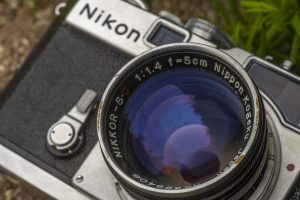
Nippon Kogaku’s color coating was well ahead of nearly everyone else when these lenses were made, and as a result, color reproduction and contrast are excellent, flaring was not observed, and every image was free of typical optical anomalies such as chromatic aberrations, purple shift, coma, and whatever other ones there are.
At the risk of coming off a bit snobbish, you don’t just buy a Nikon SP to get great images. Of course it’s certainly capable of great images, but it’s important to remember that this was a system camera designed for the working professional photographer. Nippon Kogaku made every effort to make this as reliable and high quality as they could. Many Nikon SPs still work great today and if they need a little bit of servicing, it is nothing that would be a requirement for it to work.
The greatest appeal for me about shooting the Nikon SP was in the experience. This was a machine that was purpose built to compete with the best of the best of the best and I think it succeeded at that. While Nippon Kogaku has built many other great cameras over the years, I can’t think of another where the company aimed for the stars, succeeded, and then moved onto something else.
Like the Leica M3, Nikon SPs don’t come cheap. Had it not been for the generosity of Robert, I would likely have never had an opportunity to experience one. With only 22,348 ever made, and most of those firmly in the grasp of collectors, opportunities to shoot one don’t come up often, and if you have a chance, even if it’s as a loaner, I highly recommend you take it!
Related Posts You Might Enjoy
External Links
https://www.cameraquest.com/nikonsp.htm
http://www.mir.com.my/rb/photography/companies/nikon/htmls/models/htmls/s2_s4.htm
https://kenrockwell.com/nikon/rangefinder/sp.htm
https://www.pacificrimcamera.com/pp/nikonsp.htm
https://www.sheldonbrown.com/org/cameras/nikon-sp.html
https://cameralegend.com/tag/nikon-sp-review/
https://www.casualphotophile.com/2018/09/07/nikon-sp-limited-edition-overview/

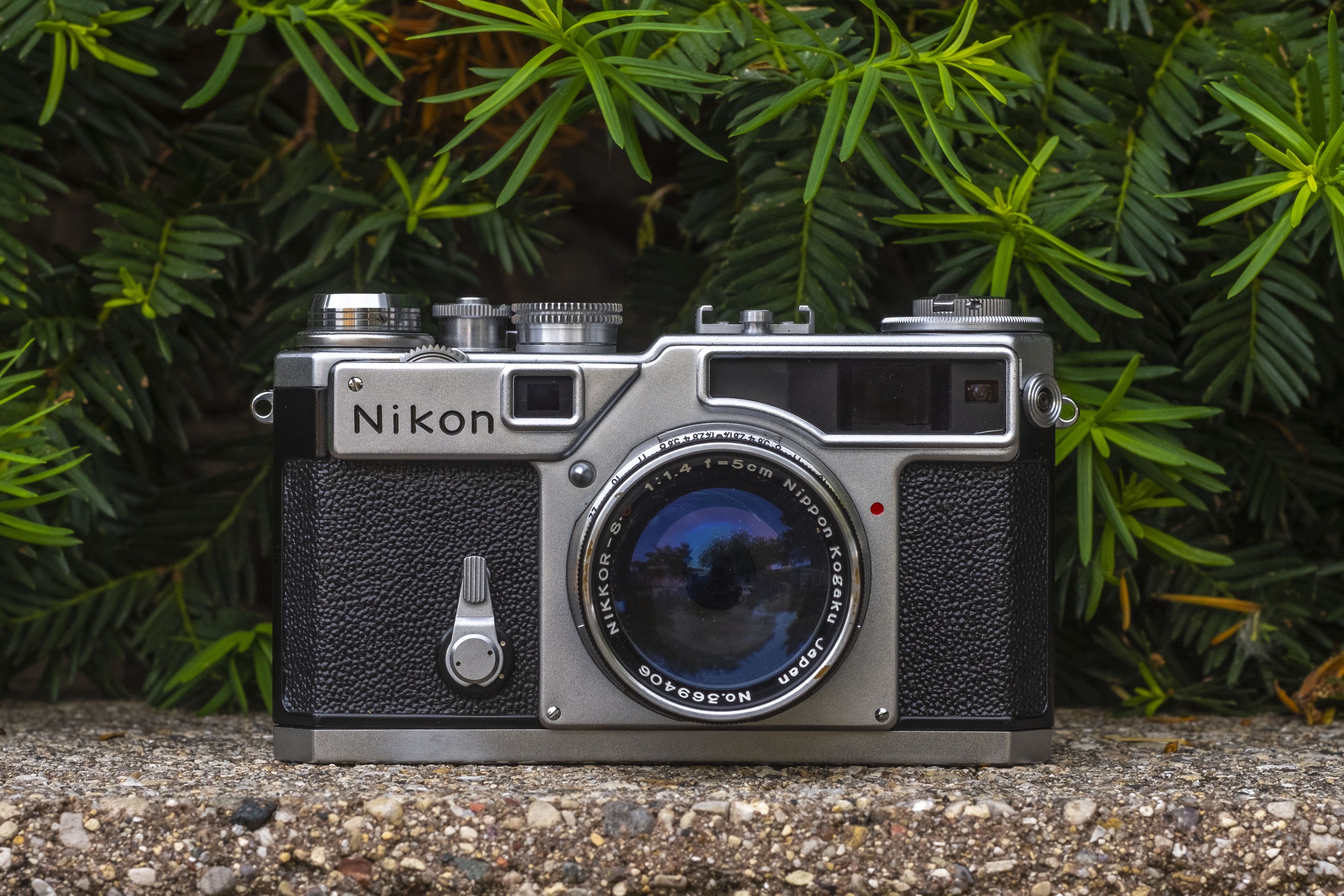
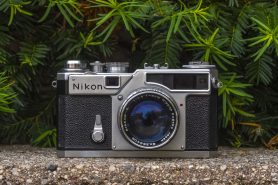
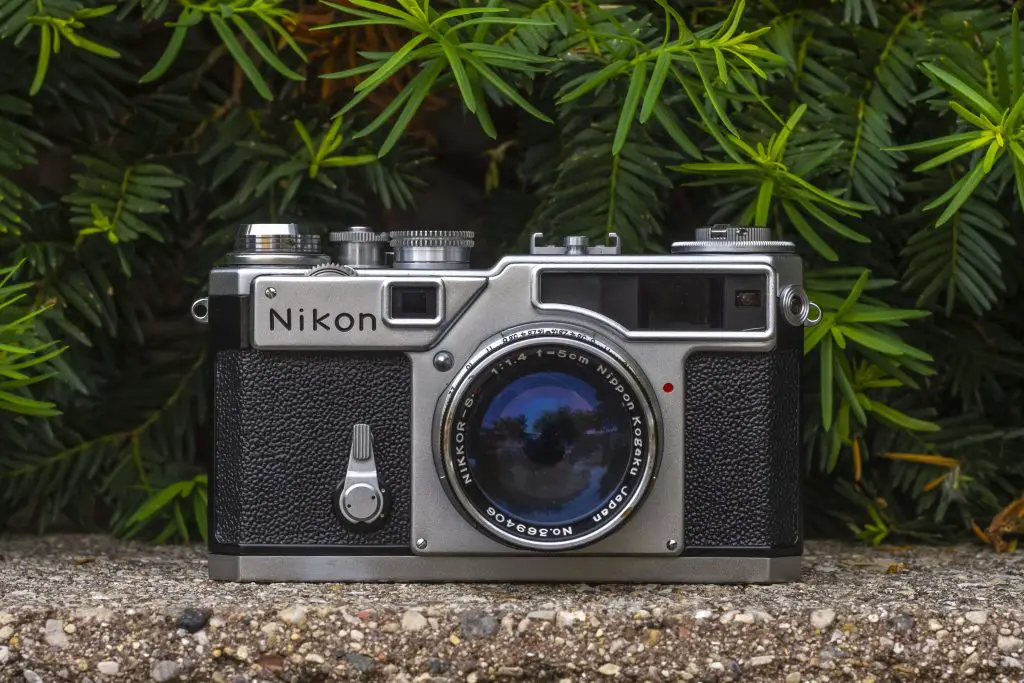





























I preferred the Leotax over the Nikon. Same idea to compete with Leica however the Topcon lens offerings for Leotax were better than the Nikon group. I still have and use a Leotax F, NRIII, Topcon 35L and my Leica IIIc. It is all about what feels good in the users hands. I do own several Nikon film cameras, (F Photomic, FTN Nikkormat, Nikonos II and the FG but always defer to my Topcon’s, Exakta’s or Leica R3, (and at times a Contaflex IV the forgotten SLR). David
Note: to this day the Topcon Simlar f1.5 5cm is one of my favorite lens and I have adaptors for LTM to Exakta/Topcon, Leica M, R and Nikon SLR cameras. You can not go wrong with good glass.
…I recently purchased an LTM adaptor for the Canon 40D to use in manual mode. Something new to play with.
It’s great to hear a real camera lover give such a complete, amazing, loving review. Bravo, kudos and yay for such an enlightiing and educational revue and good writing. Thank you!
Hi Michael, I am glad you enjoyed the review! I absolutely loved the SP and was happy to shoot it, but with it being a loaner, I am still very pleased with the Nikon S2 in my collection that actually belongs to me. If you’re in the market for an SP, and just can’t justify the price, I encourage you to check out the S2. What it lacks from the SP is more than made up by the significantly lower price!
Thanks, Mike, for a superb review, accompanied by excellent (mouth-watering) photos. The link to the Keppler tear-down article is much appreciated, too. I’ve never worked with a Nikon rangefinder nor a Leica M, but spent years earning money (and having fun) with several Photomic FTns and F2s. There is indeed something about the feel of these cameras: The smooth and certain feel of the film advance, the muffled sound of the shutter, the understated detail of the controls, the consistency of these mechanical attributes throughout years of hard work … even the fit and finish of leatherette and brushed metal. Few other cameras – neither analog nor digital – approach the standards Nippon Kogaku set here. (I’d be remiss if I did not mention the f5.6 / turn to the left / turn to the right lens change drill, too!)
The M3 isn’t quite a life size 1:1 viewfinder, it’s actually 0.91x, so about 10% less than life size. This really eliminates the possibility of shooting with both eyes open, as one eye is seeing life size and the other a reduced view, which is very confusing to the brain. The SP as well as the other Nikons from the S2 forward are all 1:1. The S3 even offers a 35mm frameline at 1:1, a unique and impressive feat.
Really nice review of a fantastic camera. I really enjoyed this review and your appearence with Bob Rotoloni on the Classic Lenses Podcast. One of the camera stores I frequent recently put up a SP and 5cm f1.4 for sale. I had a chance to examine it and it was fantastic. The main viewfinder was bright and clean and the body was in excellent condition. What a gorgeous machine with rock solid build quality. I can see why people love this camera.
Thanks for the compliment Hong. I agree with your assessment of the SP, it truly is a fantastic camera. I wish I had one in my permanent collection, but for now, my S2 will suffice! 🙂
I ended up getting the SP after getting a very fair deal for the camera and lens. The tactile experience of using well built cameras from this era is very nice. This probably doesn’t help make better photos but it certainly makes the experience more enjoyable. Great blog!
Glad to hear it! You are right, these are wonderful cameras that sometimes can be just as enjoyable to hold and admire, as they are to shoot!
You’re also right that a camera doesn’t automatically make you a better photographer, but I do think that enjoying the equipment makes the whole process of photography more enjoyable too, and you’re more likely to be inspired or willing to take chances when you enjoy your equipment. So who knows, maybe that SP will inspire you in ways you never thought it could!
Thoroughly researched and very well presented, with one slight fault – the author’s incorrect use of the word “it’s”, which is the contraction of the words “it is.” If you cannot use “it is” in the context, then you must use “its” without the apostrophe, as in this case: “It’s original competition with the Leica M3 has never faded and even today, nearly 62 years after it’s release, people still compare the two. ”
Minor detail….